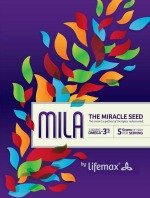Lasik vs.30 Day Contacts: Both Treat Refractive Errors
Lasik and 30 day contacts are two very different alternatives to achieve clear vision. Since both treat refractive errors, and one involves surgery, let’s take a look at the advantages of each treatment.
30-Day Contacts
You may know these as continuous wear contacts. Originally approved for use by the FDA in 1981, they were restricted to 7-day use after reports of infections reached the FDA. Continuous wear lenses can be left in place during sleep. They’re disposed of rather than cleaned and reused.
Recent improvements in the plastics used to make contact lenses have made them, again, 30-day wear contacts. These are now made from silicone hydrogel.
Hydrogel contains water that can transport oxygen through the lens to the eye. However, hydrogel alone doesn’t allow enough oxygen to keep the eye healthy for 30 days.
Newer plastics used for contact lenses are made from silicone and hydrogel. Silicone allows almost seven times as much oxygen to pass through the lens as hydrogel alone. This amount oxygen allows the eye to breathe well enough to stay healthy. As of this writing FDA has approved only two brands for 30-day contacts wear, CIBA Vision’s Night & Day and Bausch & Lomb’s PureVision.
Advantages and Risks of 30 Day Contacts
The big advantage of continuous wear 30 day contacts is the freedom from changing and cleaning your lenses all the time. You put them in and leave them in place for 30 days. Dispose of them and put in a fresh pair.
Other huge advantages of 30 day contacts are instant vision correction, prescription changes are no hassle, and they can be made in bifocal strengths or prescribed for distance to be used with reading glasses.
Continuous wear contacts are safer than surgery.
One British study found that some people had fewer problems with dryness and other discomfort with the silicone hydrogel lenses. This may make it possible for people who had problems with earlier types of contacts or people who are on medications like blood pressure meds or antihistamines that have a dehydrating effect. For temporary dryness artificial tears is a solution for many people.
The biggest risks seem to affect people who had problems with regular contacts. And those problems were more about discomfort and dry eye.
The incidence of infection is only slightly higher than that for daily contacts. It’s still well within a range of safety.
Costs for continuous wear lenses are about $25 per month, about half the cost of daily contacts. You’ll spend less on solutions, too.
Advantages and Risks of Lasik
Well over 95% of patients having laser eye surgery report no complications, and fewer than 1% report serious ones. Most people achieve 20/40 or better vision without corrective lenses.
Improvements in laser technology, like Wavefront, femtosecond lasers and new procedures have improved the safety and outcome statistics for all laser eye surgery treatments.
For most patients who have complications, they are not new ones. Glare and starbursts at night and dry eye continue to be the most common ones. Some of these gradually reverse over three to six months after surgery, and others are corrected with enhancement treatment.
Some patients with Lasik-treated corneas experience a reversal over time. They may lose the initial near perfect vision and require glasses for some activities. Others do well with an enhancement treatment.
The biggest risk by comparison is the surgical exposure.
Costs for Lasik average around $2,000 per eye.





